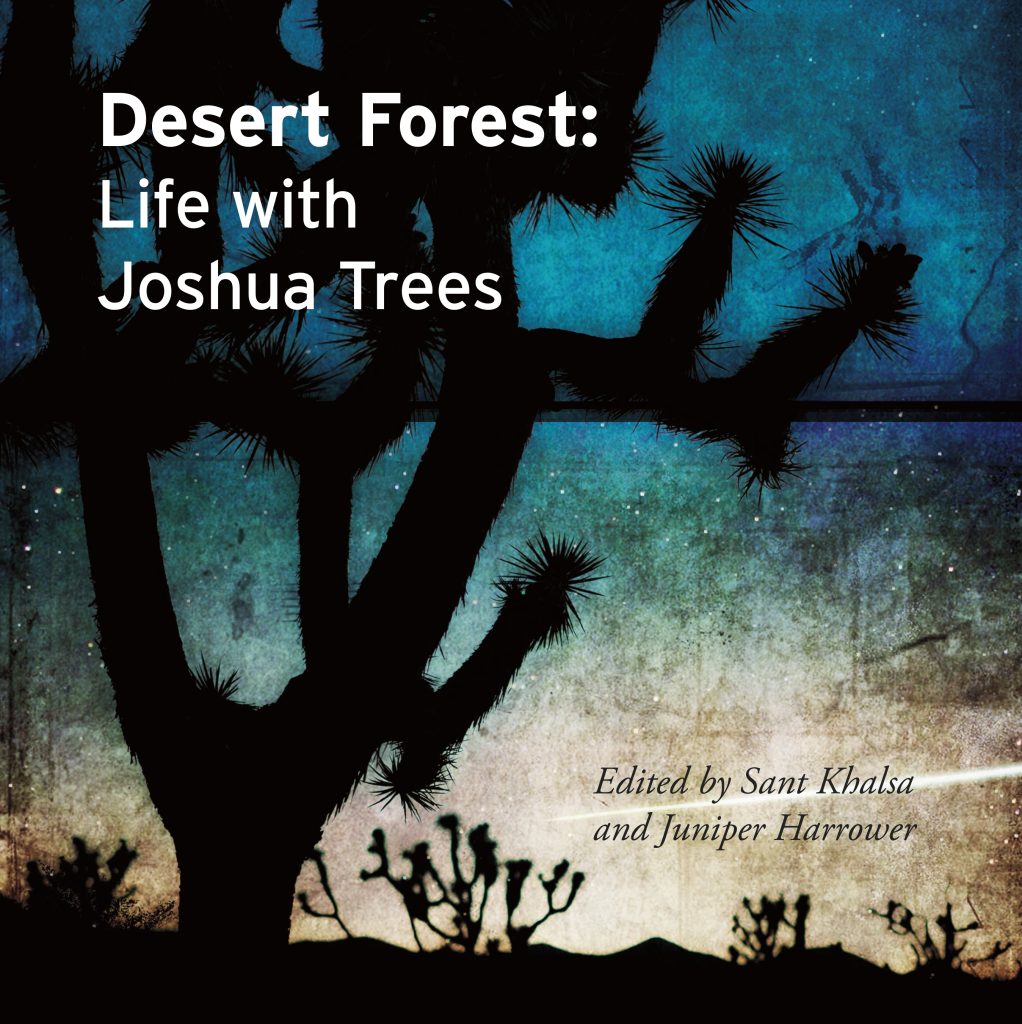Book Review

Desert Forest: Life with Joshua Trees is a revelatory compendium—part elegy, part manifesto—centered on that spiky, iconic sentinel of the Mojave Desert. Assembled by scientists, historians, and artists, this is no ordinary nature book. It’s a multi-vocal chorus, grappling with ecological fragility and political urgency, yet always rooted in some primary form of awe. The Joshua tree becomes muse and metric, measuring our numerous planetary trespasses. Published by Inlandia Institute—in tangent with the past eponymous art exhibitions at MOAH in Lancaster and Hey There Projects in Joshua Tree—Desert Forest is a dazzling interdisciplinary work, arresting in both imagery and intellect. In many ways, it’s a bittersweet love letter to a disappearing biome—written in science, art, and memory.
The distinctive list of essay contributors in the book is as immense as it is diverse, including top environmental scientists, state park rangers, Indigenous historians and Buddhist philosophers. The same is true of the artists represented, from David Hockney to Kim Stringfellow, covering most media fit for print—from nearly every form of photographic reproduction to documents of site-specific installations and good ol’ traditional paintings in this handsome 304-page volume.

The book is divided into five overlapping sections that act like shifting lenses to appreciate not only the discrete Joshua tree but the enormous environment that has both sustained it and—thanks to human industry in the last several decades—has also greatly reduced its numbers. These sections include Kinships, about multispecies ecologies; Hauntings, about plant, animal and cultural deaths by everything from colonialism to toxic emissions; Ecologies, encompassing scientific approaches to understanding and preserving the environment; Communities, about the relationships and action that influence regulatory bodies and conservation; and Visions, which deals with how Joshua trees are represented in culture.

Still, for all its scope, Desert Forest occasionally buckles under the weight of its own ambition. The essays can vary wildly in tone and depth—some are luminous and poetic, others feel more like hurried white papers. There’s also a tendency toward repetition, especially in the ecological sections, where similar warnings about desertification and climate trauma are echoed with diminishing returns. A tighter editorial hand might have clarified the arc of the book without sacrificing its pluralism. And while the visual art is most often striking, a few inclusions veer dangerously close to eco-tourist kitsch—images that aestheticize the very degradation they claim to protest.
What’s most remarkable, though, is how Desert Forest resists the didacticism that often bedevils environmental art. Instead, it sustains a tremulous sense of attention—ethical, aesthetic, even devotional. The Joshua tree becomes not just subject but agent, an unlikely philosopher-king with roots in Paleogene lava and arms outstretched in permanent invocation. The book leaves us somewhere between grief and reverence, stranded perhaps, but in good company: a forest of minds reaching for a future that may no longer include its namesake, but that cannot forget it.
Desert Forest: Life with Joshua Trees
Edited by Sand Khalsa and Juniper Harrower
Published by Inlandia Institute
2024; 304 pages; ISBN-13: 978-1955969314
About the writer: Stephen Wozniak is an arts writer and exhibiting artist based in Los Angeles who has written feature articles, exhibition reviews and conducted interviews for the Observer, Whitehot Magazine of Contemporary Art, Artillery, The Baltimore Sun, Art Spiel and other publications. He has also written critical essays for major commercial galleries and museum exhibition catalogs. To learn more: www.stephenwozniakart.com. Visit on Instagram: @stephenwozniakart.